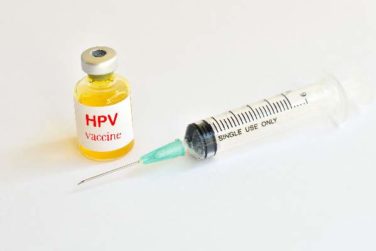John Ioannidis was introduced as a rock star. To the congregation at the 2016 Lown Institute Conference in Chicago, that is what he is. The Stanford University professor is most famous for the heavily cited (over 2,000 citations so far) paper in PLoS Medicine, titled, “Why Most Published Research Findings Are False.”1 The cheering audience of clinicians, researchers, community organizers, and patient advocates were obviously familiar with the work. His message about the poor state of medical research and the inaccurate application of evidence-based medicine resonated with this audience. The conference’s emphasis was on Right Care, a balance between the many benefits of modern medical care and the harms of overdiagnosis and overtreatment. There are many similar initiatives in medicine. For instance, in 2012 the American Board of Internal Medicine Foundation launched Choosing Wisely “with a goal of advancing a national dialogue on avoiding wasteful or unnecessary medical tests, treatments, and procedures.”2 The U.S. Preventive Services Task Force has been issuing many recommendations recently. Several of those have counseled reducing screening and treatment rather than touting medical advances.
Pediatric hospital medicine (PHM) is a leader in this value medicine movement. Pediatricians are aware of the emotional trauma of procedures and hospitalizations, of the harm caused by radiation exposure, and of the phobia and dread of needle pokes. Primum non nocere.
The medical care system has contributed to the improvement in life expectancy over the last 50 years. The life expectancy for U.S. adults has increased about 3-4 years during that interval, although it is unclear what fraction of that is attributable to medical care. The per capita cost of the U.S. health care system is far greater than in other democratic developed countries, so we probably spend most of those extra 3-4 years working to pay for it. Government health care contributes heavily to the national debt. That is important because, despite all the technological advances in medicine, the socioeconomic determinants of health are far more important.3 So if we are wasting money on ineffective care, we can improve health by safely doing less.
A recently released article documents a salient example of inaccurate research leading to ineffective treatment. For over five winters, the pediatric hospitalist community has been debating whether nebulized hypertonic saline is beneficial for infants hospitalized with bronchiolitis. At a pro/con SmackDown debate at the 2011 PHM conference, both of the speakers were cautious in presenting their side of the debate. Nebulized hypertonic saline is effective for improving pulmonary clearance of the thick mucus of older children with cystic fibrosis. A few initial studies had shown conflicting but promising responses for infants with bronchiolitis, but the studies were underpowered and used disparate methods.
Since then, the accumulated evidence has been disappointing. Many additional small, underpowered studies were published in 2013-2014. A total of 18 studies were included in the latest meta-analysis by Brooks, Harrison, and Ralston, published online as “Association Between Hypertonic Saline and Hospital Length of Stay in Acute Viral Bronchiolitis: A Reanalysis of 2 Meta-analyses” in JAMA Pediatrics.4
Meta-analyses often obscure important differences among the studies they are combining, resulting in comparing apples and oranges, or worse creating fruit salad. But in a tour de force analysis, this article did not hand wave away all the typical statistical assumptions made by the average published meta-analysis. The intrepid authors examined the differences among the publications and calculated that those studies were too heterogeneous to be combined simply. When studied in more depth, two publications from one study population in China were outliers. The average length of stay was much longer in that study. Among the remaining papers, there was a residual correlation in which the studies leaning toward showing benefit had admitted the treatment population later in the course of the illness.
After adjustment for these anomalies, the conclusion was that the nebulized hypertonic saline treatment did not produce a clinically significant benefit. After years of debate on the hospitalist Listserv, this new article had one commentator pronouncing the end of using nebulized hypertonic saline for hospitalized infants with bronchiolitis and asserting that the issue could now rest in peace.
References
1. PLoS Med. 2005. doi: 10.1371/journal.pmed.0020124 .
4. JAMA Pediatr. 2016 Apr 18. doi: 10.1001/jamapediatrics.2016.0079 .
Dr. Powell is a pediatric hospitalist and clinical ethics consultant living in St. Louis. Dr. Powell said he had no relevant financial disclosures. E-mail him at pdnews@frontlinemedcom.com.





